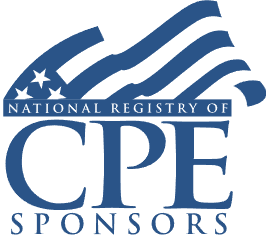Structuring GRATs: Maximizing Estate Freeze Benefits, Avoiding Costly Errors With Specific Trust Drafting Tools

Course Details
- smart_display Format
On-Demand
- signal_cellular_alt Difficulty Level
Intermediate
- work Practice Area
Estate Planning
- event Date
Tuesday, September 6, 2016
- schedule Time
1:00 PM E.T.
- timer Program Length
90 minutes
-
This 90-minute webinar is eligible in most states for 1.5 CLE credits.
-
BARBRI is a NASBA CPE sponsor and this 110-minute webinar is accredited for 2.0 CPE credits.
-
BARBRI is an IRS-approved continuing education provider offering certified courses for Enrolled Agents (EA) and Tax Return Preparers (RTRP).
-
Live Online
On Demand
This CLE/CPE course will offer a comprehensive and practical guide to the structuring of Grantor Retained Annuity Trusts (GRATs). The panel will go beyond the basics to provide specific drafting tools to avoid potentially costly mistakes and maximize the estate freeze benefits of GRATs. The panel will discuss client circumstances that benefit most from GRATs and suggest sample language for relevant clauses such as self-correcting features, asset substitution powers, term selection, and other key components of a successful GRAT.
Description
A GRAT is a popular “freeze” technique used by estate planners to protect client’s estates from high-growth assets. In a properly structured GRAT, an individual grantor (usually a parent or grandparent) transfers assets into an irrevocable trust and receives annuity payments from the trust for a specified term. This technique has been especially prevalent over the past few years, due to continued low interest rates.
Properly structured, GRATs can provide a valuable tool for shifting “excess” estate growth from a grantor to beneficiaries. Like most planning vehicles, GRATs contain some level of risk, and estate planners must have a firm understanding of the dos—and don'ts—of structuring these irrevocable trusts.
Crucial to implementing a GRAT strategy is understanding the advantages and limitations of GRATs, identifying assets that are optimal for inclusion in a GRAT, determining optimal term, and utilizing various techniques within the GRAT structure. Planners must avoid the inherent tax traps that could result in disadvantageous estate, gift or income tax consequences.
Listen as our experienced panel provides a thorough and practical guide to structuring GRATs. The webinar will go “beyond the basics” to offer specific and useful guidance on drafting the GRAT, and discuss the economics behind GRAT strategies.
Outline
- Brief overview of GRATs
- Critical mistakes to avoid
- Properly structuring the term of the trust and setting the annuity
- Key features to include
- Various GRAT drafting considerations
- Formula GRATs
- Graduated GRATs
- Separate husband-wife “hedging GRAT”
- Illustrations
Benefits
The panel will discuss these and other important questions regarding the structuring and use of GRATs in an estate plan:
- Techniques for ensuring that a GRAT will qualify as a grantor trust
- Structuring a formula GRAT to avoid IRS challenge
- Tax benefits of graduated GRATs
- Structuring GRAT to qualify for the marital deduction
- Comparing GRATs to other freeze techniques
NASBA Details
Learning Objectives
After completing this course, you will be able to
- Ascertain the types of assets and scenarios that best qualify for inclusion in a GRAT
- Recognize the risks that must be addressed in structuring the term of the GRAT
- Discern when a graduated GRAT, with return to the grantor deferred, would be a viable tax and gifting strategy
- Identify significant risks to be avoided in structuring a GRAT
- Decide when other freeze techniques would better suit client circumstances
- Field of Study: Taxes
- Level of Knowledge: Intermediate
- Advance Preparation: None
- Teaching Method: Seminar/Lecture
- Delivery Method: Group-Internet (via computer)
- Attendance Monitoring Method: Attendance is monitored electronically via a participant's PIN and through a series of attendance verification prompts displayed throughout the program
- Prerequisite: Basic knowledge of taxation.

Strafford Publications, Inc. is registered with the National Association of State Boards of Accountancy (NASBA) as a sponsor of continuing professional education on the National Registry of CPE Sponsors. State boards of Accountancy have final authority on the acceptance of individual courses for CPE Credits. Complaints regarding registered sponsons may be submitted to NASBA through its website: www.nasbaregistry.org.

Strafford is an IRS-approved continuing education provider offering certified courses for Enrolled Agents (EA) and Tax Return Preparers (RTRP).
Unlimited access to premium CLE courses:
- Annual access
- Available live and on-demand
- Best for attorneys and legal professionals
Unlimited access to premium CPE courses.:
- Annual access
- Available live and on-demand
- Best for CPAs and tax professionals
Unlimited access to premium CLE, CPE, Professional Skills and Practice-Ready courses.:
- Annual access
- Available live and on-demand
- Best for legal, accounting, and tax professionals
Unlimited access to Professional Skills and Practice-Ready courses:
- Annual access
- Available on-demand
- Best for new attorneys
Related Courses

Separate Share Rule Considerations in Structuring IRA Trusts
Available On-Demand

Navigating Separability After Star Athletica: Applying the New Test
Available On-Demand
Recommended Resources
Building Your Book: Strategies to Secure Long-Term Success
- Business & Professional Skills
- Career Advancement
- Talent Development